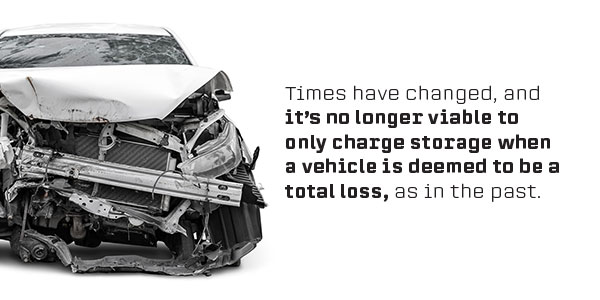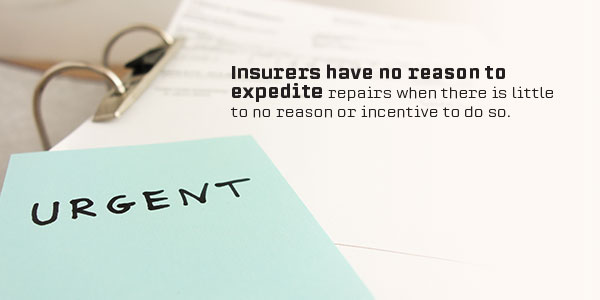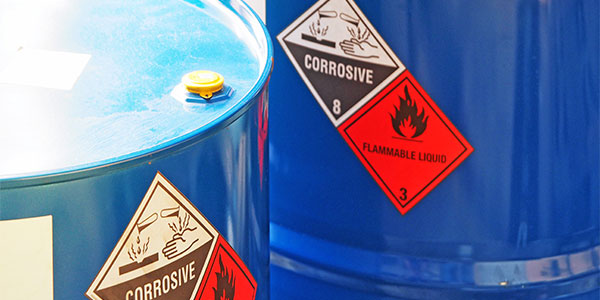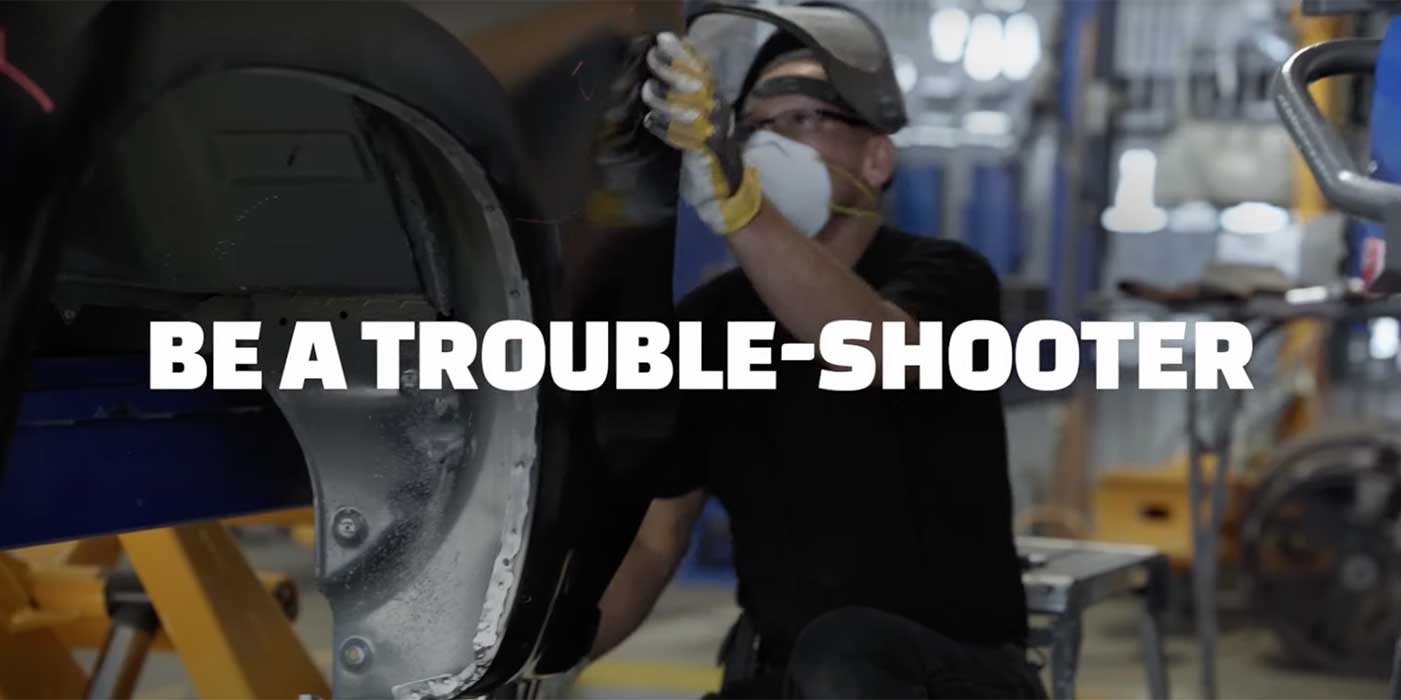When reading this article, you’ll notice that I’ve touched on some of this information before. However, this information warrants repeating, as many quality-oriented repairers have yet to embrace and implement it in their businesses.
A Different Viewpoint
Many times, I’ve heard repairers say, “All I want to do is to serve our customers with safe and properly repaired vehicles and give them the best experience I can.” Really? Even at a financial loss and incurring significant liabilities?
They say “talk is cheap,” but I’m writing this to tell you that “cheap” is not good for your business, customers or the collision industry. So, ask yourself this question: “Although I enjoy what I do, is it merely a hobby … or is it my business?”
For decades, we’ve heard industry leaders speak and write about increasing profitability through improving production by becoming more efficient, and it’s mostly true. A company that provides service to others (plumbers, electricians, mechanics, painters, medical professionals, restaurants, etc.) will “earn more when it turns more” as long as its rates allow it to be competitive in its marketplace based on the level of goods and services it provides.
So, what is the collision shop owner/manager to do when he or she has a good handle on the shop’s efficiency to improve profitability? The answer is to step back, look at the business from a different viewpoint and ask yourself, “What are the things my company does that have a cost and potential liabilities that I should assess a reasonable fee for?”
Storage
When you enter into a contract to repair a person’s vehicle that is disabled and/or deemed unsafe to drive, will you provide care, custody and control of the customer’s vehicle for several weeks while awaiting space in your production area, parts and/or approval from your customer (or the insurer)? If so, how long are you willing to absorb all the risks and liabilities related to that vehicle being at your facility before you begin to assess daily charges for storage (or “protective or safe containment”)? Let’s face it: Times have changed, and it’s no longer viable to only charge storage when a vehicle is deemed to be a total loss, as in the past.

If you were to consider assessing fees for caring for the vehicle, when would you begin to charge this fee and for how much? I expect most any business (i.e. storage lot, parking garage, hotel, etc.) would charge for each day its facilities were used from day one (excluding productive time working on the vehicle) until those services were no longer required. After all, repairers have no reservations about charging for total loss fees from the day the vehicle arrives until the day it is removed (less the days they worked on it). Why would a repairer not charge daily fees for the delays caused by others that it has no control over?
There is another important aspect of assessing storage/containment fees that should not be overlooked: It gives others the incentive to expedite the repair to avoid such charges. Insurers have no reason to expedite repairs when there is little to no reason or incentive to do so. I’ve seen insurers intentionally delay initial inspections and supplemental approvals merely to punish consumers for not using their direct-repair program (DRP) shops, stating something to the effect of, “If you had taken it to a shop we recommended, you would have your vehicle back by now!” The intent of this is to disparage the repairer and have the customer choose a DRP shop the next time such services are needed.

Insurers can be very cavalier with others’ time and expense; however, they’re generally quick to do what’s necessary to mitigate their expenses and avoid charges whenever possible. Assessing storage/safe containment fees is one way to help expedite the repair, as it encourages both insurers and customers to provide the necessary decisions and authorizations to enable repairers to continue with a repair. As I often say to my clients, “Only when the risks begin to outweigh the rewards will behaviors change.”
Relocation of Disabled Vehicles
When you have a vehicle brought in by a tow service that is not operable (i.e. dead battery or damaged mechanical/electrical components, such as suspension, radiator, wiring harness, flat tire(s), etc.) and manpower and/or equipment is required to move it from one place to another, are you assessing applicable fees?
A fee to relocate a vehicle should be based on the manpower or equipment employed to do so safely while protecting the vehicle from further damage. Manually pushing a vehicle from one place to another by hand can cause injury to staff and equipment as well as potential damage to the vehicle, so such liabilities should be considered when determining and assessing fees.
Batteries
Repairers should clean up battery acid that has gotten on the vehicle due to an impacted battery, as it can cause irreparable harm and costly cosmetic damage to the engine and its components, wiring and most any other surfaces it contacts if it is not addressed and neutralized soon after the loss. Such corrosive damage can often be enough to cause a vehicle to be deemed a total loss and cause a significant loss in salvage recovery value.
Other fees could be:
- Assisting the customer in attaining their personal effects upon a total loss (i.e. removal of license/vanity plate(s) and personal items as well as deleting GPS saves and personal information, etc.)
- Checking air pressure before test drive
- Torquing lug bolts to specs on replace and install (R&I) wheels/tires
- Pre-washing vehicle to adhere to paint manufacturer’s requirements for lifetime warranties
- Jump-starting the vehicle
- Recharging the battery
- And many more.
Prevailing Competitive Practices
You say, “Well yeah, but these are not on the list of ‘prevailing competitive practices!’” Well, guess what? Several years ago, neither were the various necessities now commonplace with advanced driver-assistance systems (ADAS) and electric vehicles. Times change, the industry is forever changing, and those within the industry need to change with it to meet today’s and tomorrow’s challenges.

I recall in the early 1990s when the EPA was coming down on hazardous waste and repairers were being mandated to follow specific regulations and methods to handle liquid and solid waste. As a compliant professional, I stepped up and purchased a recycler and followed the program of containment to the letter (e.g. marking and grounding a 50-gallon drum, making a special funnel with a lid, keeping written records to show chain of custody, incurring the cost of having an outside source pick it up and take it away for proper disposal, etc.) As a result, I decided to assess a “hazmat” fee for the added handling, costs and potential (“cradle to grave”) liabilities I was incurring. Based on the volume we were experiencing and the costs and efforts involved, I figured $3 per repair order was more than reasonable at the time. Of course, when it was added to my estimates, the insurers cried foul and, after asking me what it was, I was told repeatedly that I was “the only one” charging for this and handling and disposing waste was … you guessed it … a “cost of doing business.”
Today, there is no argument about the need for such a charge, and insurers are tendering it on their initial estimates. But interestingly, many are still paying $3 to $5 per repair even though the costs have steadily risen over the past 30-plus years, and most repairers are still accepting this low fee as if they’re somehow lucky to get it.
Now, before you think, “Well, that’s a small thing to worry about,” consider multiplying your annual repair order (R.O.) count not by $5 but $8 to $10 (which is still likely at or below cost) and see what you should be attaining for hazardous waste containment and handling. For example, 60 R.O.s per month times 12 months at $9 per R.O. equals $6,480 per year that you’re either gaining or losing. This is pocket change compared to many other chargeable services that most repairers are currently not assessing, which will yield even greater income.
I encourage every shop owner/manager to look closely at the services you offer and begin to apply a value to them, understanding the potential liabilities associated with each one. If you don’t do it, who will? If not now, then when? As I often tell my clients, “You can give your services away if you want to — you just can’t do it for long.”














